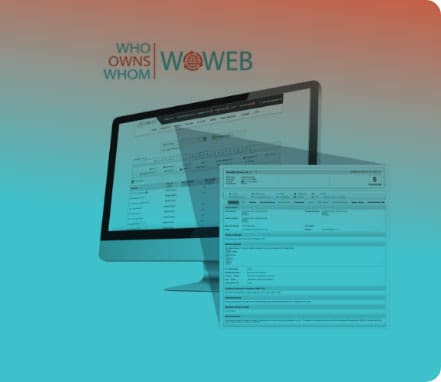Report Coverage
This report on the mining of iron ore and chrome includes comprehensive information on the size and state of the industry, its major players, and their activities and corporate actions in South Africa, on the continent and globally. There are profiles of 21 companies including Kumba Iron Ore, which dominates the iron ore sector, and other players such as Assmang and Palabora Copper. Chrome producers profiled include integrated ferrochrome producers Glencore (Glencore-Merafe), Samancor and Afarak.
Introduction
During 2018, South Africa produced 74.3 million tons (Mt) of iron ore and 17.9Mt of chrome ore, making the country the sixth-largest and largest producer respectively, according to the United States Geological Survey (USGS). Data obtained from the International Trade Centre’s Trade Map shows that iron ore exports in 2018 amounted to 63.4Mt, earning US$4.2bn, while 12.4Mt of chrome ore valued at US$1.9bn was exported. According to the Minerals Council South Africa, 18,613 people were employed by the iron ore mining sector in 2018, while the chrome ore mining sector had 18,935 employees. Rapidly rising input costs and policy and regulatory uncertainty are some of the challenges faced by the iron ore and chrome ore mining sectors.
Strengths
• In 2018, the average iron content of Kumba’s ore was 64.5%, compared to figures ranging between 64.1% and 57.7% for its main competitors.
• Kumba Iron Ore’s main competitive advantage is its high lump-to-fine ratio, which was 68:32 in 2018, while the global average was 20:80.
• Some local ferrochrome companies are among the lowest-cost producers in the world.
• South Africa has world-class ferrochrome manufacturing facilities boasting state-of-the-art technology.
• South Africa holds 36% of the world’s chromite reserves.
• South Africa is the world’s largest exporter of chrome ore and ferrochrome.
• South Africa is the world’s largest producer of chrome ore and the second-largest producer of ferrochrome.
• South Africa is the world’s third largest exporter of iron ore.
Weaknesses
• Demand for chrome ore and ferrochrome is heavily reliant on demand for stainless steel, which is largely determined by economic conditions.
• Demand for iron ore is heavily reliant on demand for crude steel, which is largely determined by economic conditions.
• Ferrochrome sales to China are impacted by exports of chrome ore from South Africa, which is enabling the growth of the ferrochrome industry in China.
• Shortage of skills in certain disciplines.
• Since South African iron ore producers are small compared to the dominant companies, they are price-takers rather than price-setters.
Opportunities
• Demand for higher-grade iron ore is increasing in China.
• Expected growth in demand for both chrome ore and ferrochrome due to increasing stainless steel production.
Threats
• Added costs in the form of the carbon tax.
• Continuing uncertainty regarding South Africa’s mining regulatory framework.
• Lower world economic growth leads to decreased demand for iron ore and chrome ore.
• Rapidly increasing production costs, in particular electricity, water and labour costs.
Outlook
Iron OreAccording to Australia’s Resources and Energy Quarterly report, global trade in iron ore is forecast to decrease by 4.2% in 2019 to 1,529Mt, before increasing to 1,568Mt in 2021. As production from Vale and Australia increases over the next two years, the seaborne market is expected to become oversupplied, due to lower steel production and increasing scrap usage in China. The price of iron ore is therefore forecast to drop to US$61 per ton in 2020 and US$57 in 2021, from an average of US$80 in 2019. Kumba Iron Ore is targeting iron ore sales volumes of between 43Mt and 44Mt for 2019, compared to sales of 43.3Mt in 2018.ChromeAccording to KPMG, world stainless steel supply is expected to grow from 48.4Mt in 2017 to 57.7Mt in 2022, while the demand for ferrochrome is forecast to increase up to 2022. Merafe Resources expects the current surplus in the ferrochrome market to decrease or turn into a deficit as a result of a decline in output in certain countries in the next 12 months. This should lead to an increase in prices. The expected increase in demand for ferrochrome should lead to growth in chrome ore demand and, consequently, chrome ore prices.
Full Report
R 1 900.00(ZAR) estimated $106.32 (USD)*
Industry Landscape
R 1 330.00(ZAR) estimated $ 74.42 (USD)*
Historical Reports
Mining of Iron Ore and Chrome Industry in South Africa 2015-11-20
R 1 900.00(ZAR) estimated $106.32 (USD)*
View Report Add to CartMining of Iron Ore and Chrome Industry in South Africa 2015-07-29
R 1 900.00(ZAR) estimated $106.32 (USD)*
View Report Add to CartTable of Contents
[ Close ]| PAGE | ||
|---|---|---|
| 1. | INTRODUCTION | 1 |
| 2. | DESCRIPTION OF THE INDUSTRY | 1 |
| 2.1. | Industry Value Chain | 1 |
| 2.2. | Geographic Position | 4 |
| 3. | SIZE OF THE INDUSTRY | 6 |
| 4. | STATE OF THE INDUSTRY | 8 |
| 4.1. | Local | 8 |
| 4.1.1. | Trade | 13 |
| 4.1.2. | Corporate Actions | 15 |
| 4.1.3. | Regulations | 17 |
| 4.1.4. | Enterprise Development and Social Economic Development | 21 |
| 4.2. | Continental | 22 |
| 4.3. | International | 23 |
| 5. | INFLUENCING FACTORS | 30 |
| 5.1. | Economic Environment | 30 |
| 5.2. | Labour | 31 |
| 5.3. | Mine Safety | 33 |
| 5.4. | Environmental Concerns | 34 |
| 6. | COMPETITION | 35 |
| 6.1. | Barriers to Entry | 37 |
| 7. | SWOT ANALYSIS | 38 |
| 8. | OUTLOOK | 39 |
| 9. | INDUSTRY ASSOCIATIONS | 39 |
| 10. | REFERENCES | 39 |
| 10.1. | Publications | 39 |
| 10.2. | Websites | 40 |
| APPENDIX 1 - SUMMARY OF NOTABLE PLAYERS | 42 | |
| Mining of Chrome and Production of Ferrochrome | 42 | |
| Mining of Iron Ore | 45 | |
| COMPANY PROFILES - MINING OF CHROME AND PRODUCTION OF FERROCHROME | 47 | |
| AFARAK GROUP OYJ | 47 | |
| ANGLO AMERICAN PLATINUM LTD | 51 | |
| ASSORE LTD | 55 | |
| BAUBA RESOURCES LTD | 59 | |
| EASTERN PLATINUM LTD | 63 | |
| GLENCORE OPERATIONS SOUTH AFRICA (PTY) LTD | 66 | |
| IMPALA PLATINUM HOLDINGS LTD | 70 | |
| JUBILEE METALS GROUP PLC | 75 | |
| LANXESS CHROME MINING (PTY) LTD | 79 | |
| NORTHAM PLATINUM LTD | 81 | |
| SAMANCOR CHROME LTD | 86 | |
| SIBANYE GOLD LTD | 89 | |
| THARISA PLC | 95 | |
| THUTSE MINING (PTY) LTD | 99 | |
| COMPANY PROFILES - MINING OF IRON ORE | 101 | |
| AFRIMAT LTD | 101 | |
| ASSMANG (PTY) LTD | 107 | |
| ASSORE LTD | 111 | |
| KUMBA IRON ORE LTD | 115 | |
| MANNGWE MINING (PTY) LTD | 119 | |
| PALABORA COPPER (PTY) LTD | 121 | |
| SEDIBENG IRON ORE (PTY) LTD | 124 | |
| STRATA AFRICA RESOURCES (PTY) LTD | 126 |



